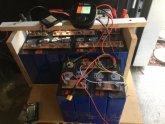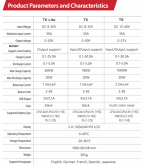Building my first 24V LiFe battery is thrusting me into the world of power supplies, pack chargers, balancers, switching supplies, benchtop supplies....my head is spinning.
So far my searches have turned up a limited selection of 24V LiFe specific chargers. The hard part is that they’re all topped at varying voltages - 28.8v, 29.2V, 29.6V, etc. If I am trying to achieve a specific state of charge, it sounds like I’m looking for a customizable voltage. Add the criteria for something above 20A and the choices are even more limited and expensive. Then there’s the cell monitoring, protection...it’s becoming too complicated to keep track of the parts list.
I’m looking for that one device that can help me bottom and top balance, and monitor individual cells. My sights were at first on the CellPro Powerlab 8, which is out of stock everywhere.
In comes the IDST T8.
Is this good? What are your thoughts? Do I still need a power source? What else do I need to get this 24V charged and balanced (top and bottom)?
Much thanks in advance.
ISDT T8 1000W DC Charger, ICC1020 https://www.amazon.com/dp/B0776PW3NW/ref=cm_sw_r_cp_api_i_h36TEb6BEBCQ8
So far my searches have turned up a limited selection of 24V LiFe specific chargers. The hard part is that they’re all topped at varying voltages - 28.8v, 29.2V, 29.6V, etc. If I am trying to achieve a specific state of charge, it sounds like I’m looking for a customizable voltage. Add the criteria for something above 20A and the choices are even more limited and expensive. Then there’s the cell monitoring, protection...it’s becoming too complicated to keep track of the parts list.
I’m looking for that one device that can help me bottom and top balance, and monitor individual cells. My sights were at first on the CellPro Powerlab 8, which is out of stock everywhere.
In comes the IDST T8.
Is this good? What are your thoughts? Do I still need a power source? What else do I need to get this 24V charged and balanced (top and bottom)?
Much thanks in advance.
ISDT T8 1000W DC Charger, ICC1020 https://www.amazon.com/dp/B0776PW3NW/ref=cm_sw_r_cp_api_i_h36TEb6BEBCQ8






